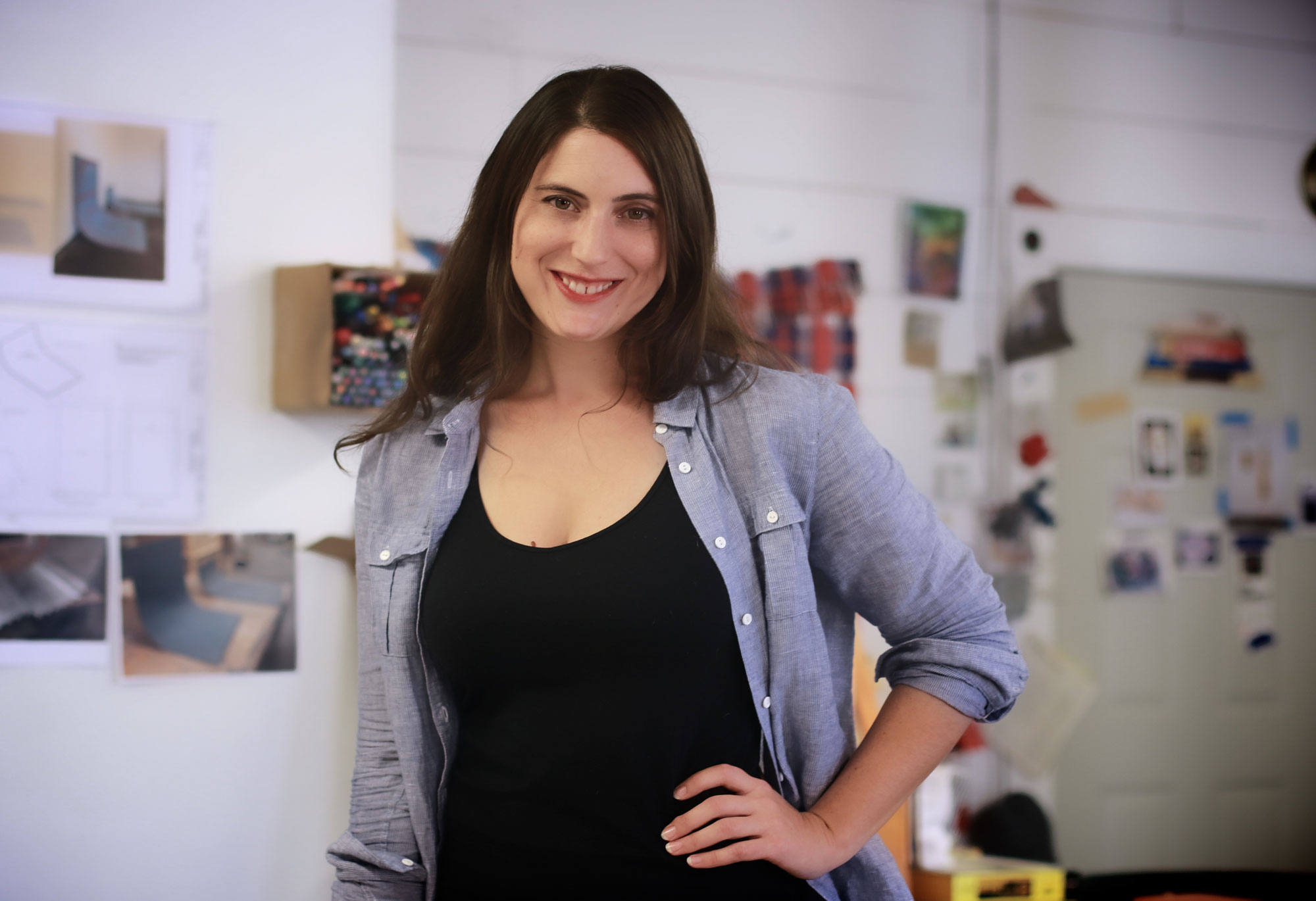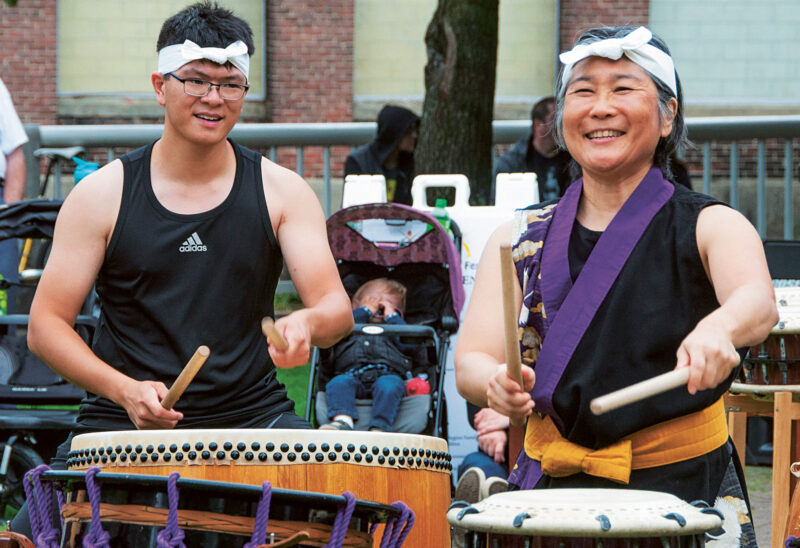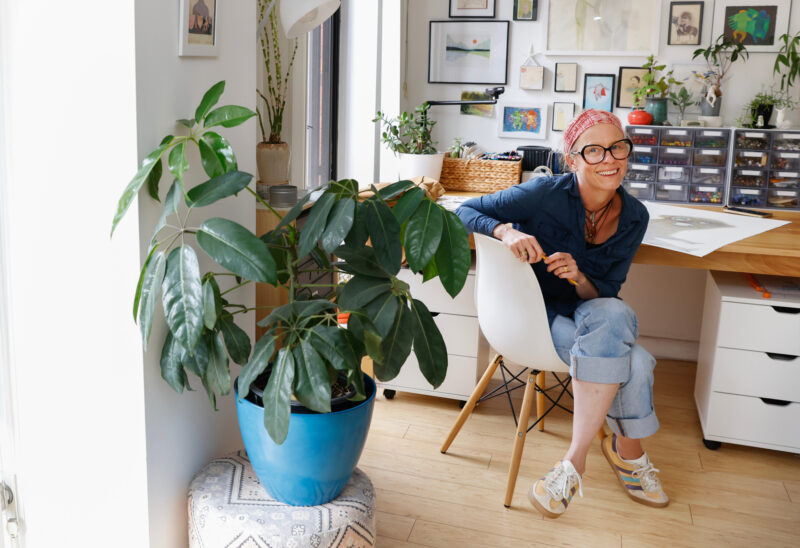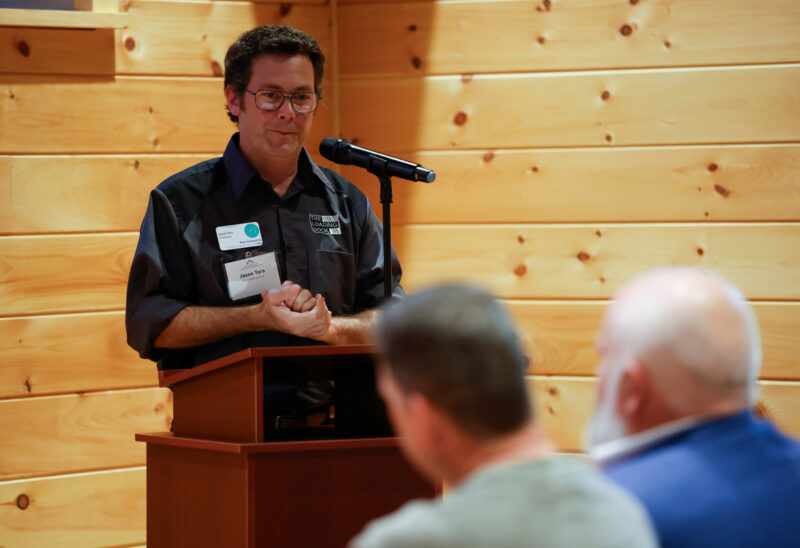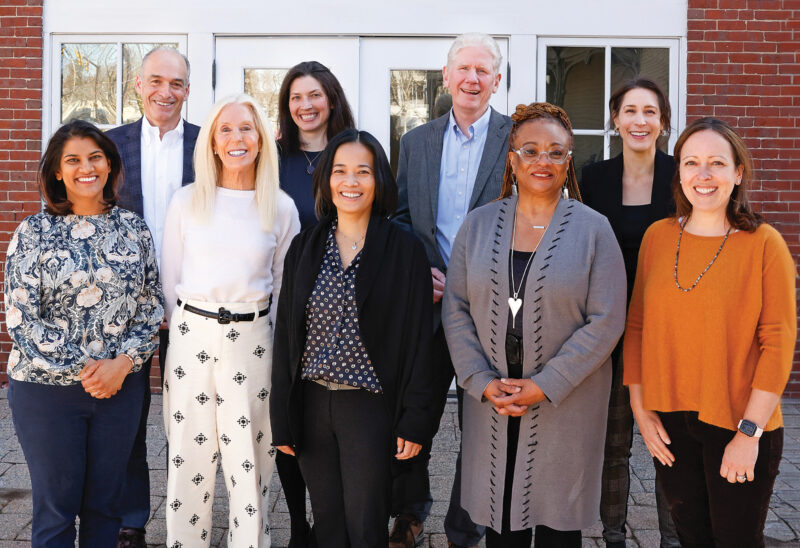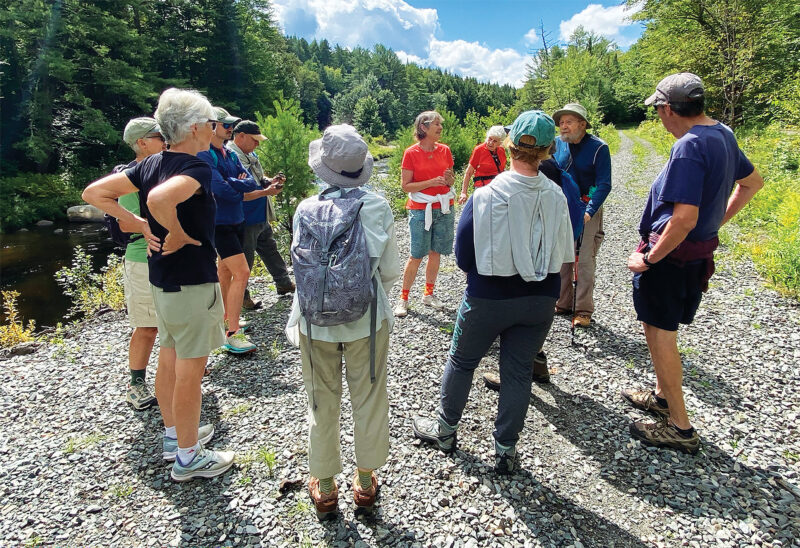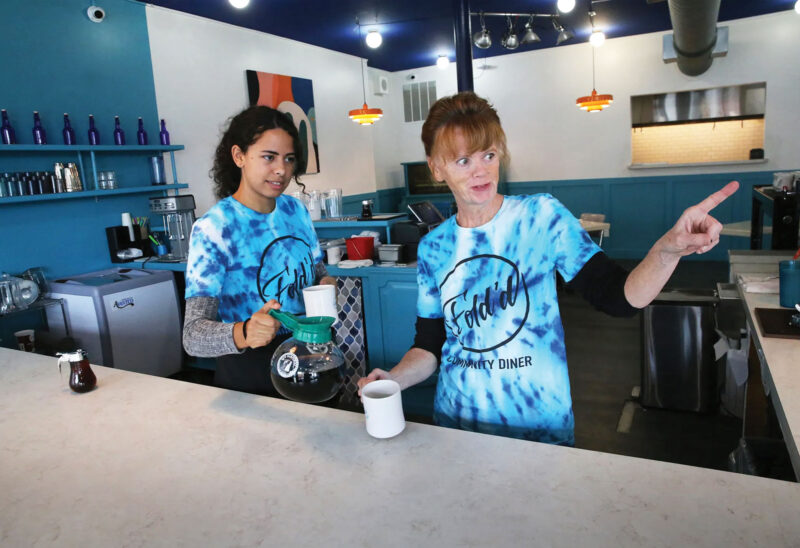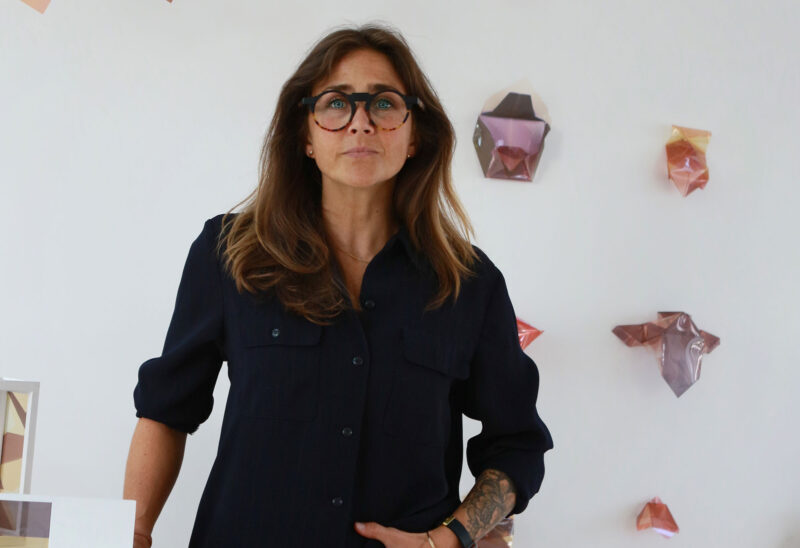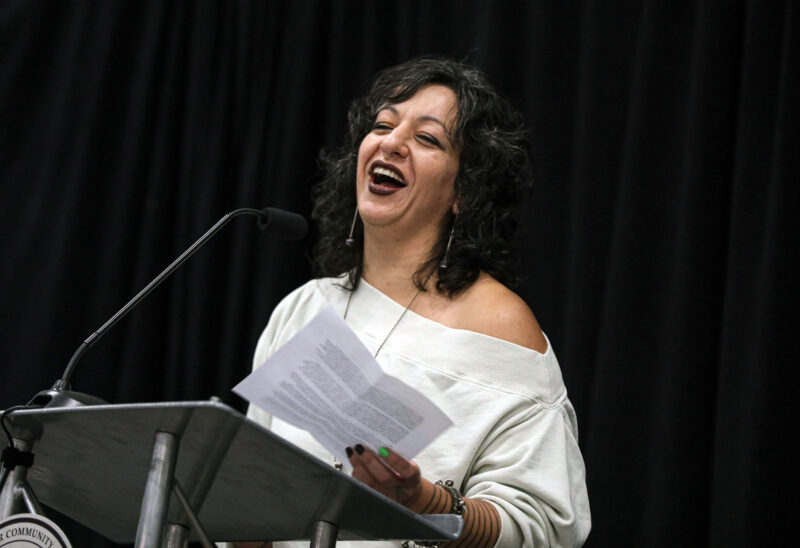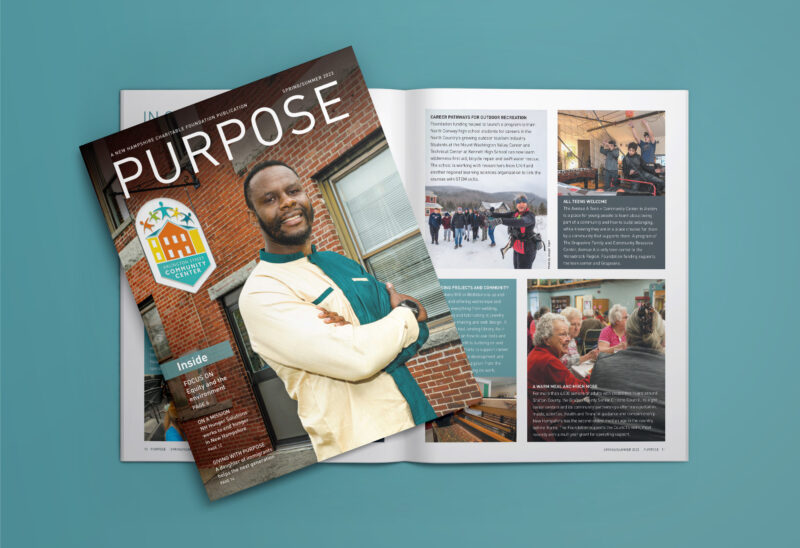Isn’t it a relief, in a screen-obsessed world, that some things still demand to be experienced live and in-person?
Carly Glovinski’s art is among those things.
Glovinski, a painter by schooling, deals in trompe l’oeil, (literally “deceives the eye”), creating art that mimics everyday objects closely enough that you might just walk right by without realizing that that lawn chair with a book sitting on it was…not.
But she isn’t trying to fool you.
She is trying, in a world of speed-dial, speed-dating and incessant screen-swiping, to get you to see. things. more. slowly.
“I am not out to trick people,” she said the other day, in her sunlit studio in an old mill building in Rollinsford. “I am out to slow down their experience of seeing.”
And it works. The experience is to marvel, to question, to consider angles and materials and objects in a way that slows you down – and makes you smile. And it demands to be done in person.
Glovinski was awarded the 2016 Piscataqua Region Artist Advancement Grant by the New Hampshire Charitable Foundation.
The $25,000 grant to an individual artist is one of the largest unrestricted grants to an artist anywhere in the United States.
Glovinski’s phone rang in her Dover home with the news at 8:30 a.m.
“I screamed and cried,” she said. And just kept repeating: “I am so grateful, I am so grateful, I am so grateful.” And then she had to sit down.
The award came in the midst of what what friends had been calling Glovinski’s “miracle year” — she is one of just 16 New England artists whose work is being featured in the deCordova Biennial at the deCordova Museum and Sculpture Park in Lincoln, MA (now through March of 2017); she is being featured in the Center for Maine Contemporary Art’s biennial exhibition in Rockland, Maine starting in November; and has a solo show in January at the prestigious Carroll and Sons gallery in Boston.
Her work, along with that of fellow finalists Cathy McLaurin, Lisa Noonis and Catherine Scala will be on display at a reception for the Artist Advancement Grant at the Discover Portsmouth Center on October 19 and will remain on display until October 30.
Like many working artists, Glovinski has not one but two other jobs: she works as a graphic designer and production manager in advertising, and teaches art. Her pieces — which she uses everything from string to wood to resin and white-out to create — are so labor- and time-intensive that it would be reasonable to wonder when she sleeps. The grant bought her time to make more art.
And she’ll need it. She will be showing all new work in each of the upcoming exhibitions.
The Artist Advancement Grant is funded by generous donors in the region and administered by the Foundation. Entries and artists’ plans are reviewed by two independent juries. Finalists all receive cash awards.
“The arts, and the presence of working artists, make our communities better, and more interesting, and more vibrant,” said Simon Delekta, a Foundation senior program officer based in Portsmouth. “And they are a huge boon to the economy. This award says to all artists, loud and clear: the arts matter. Your community values you, and your work.”
Glovinski, who could well be working in Boston or New York, said the award — which is like a mini MacArthur ‘Genius Grant’ — helps keeps artists on the Seacoast. “It is one of the benefits to being in this area,” Glovinski said. “I think opportunities like that are what help artists decide” to stay. “Knowing that’s a possibility helps me stick around.”
Glovinski finds objects that inspire her art everywhere, and she gathers them in her studio to “marinate.” Walking along the river, she discovered a stand of snake grass. A jar with a bouquet of it sits in the studio window, acting as a model for an installation that will be a field of the stuff. There is a piece of fabric from a yard sale, some tiles of floor mat that once were part of a children’s game. The skeletons of old lawn chairs stripped of their webbing. A giant stack of phone books. A rust-colored orange plant pot, turned upside-down, edges chewed by time.
Glovinski is interested in what she calls the ecology of the everyday.
“I make art about this common experience of stuff, and of living on this planet,” she says.
I make art about this common experience of stuff, and of living on this planet.- Carly GlovinskiTweet This
When her grandmother passed away, the only thing she asked for from her home was an old plaid woolen blanket, well-worn. She used it to model an installation of a blanket made from wood.
“The thing to me that makes an object most beautiful is the fact that it has been used or affected in some way,” Glovinski said. “It has that human patina. A crumpled piece of trash can be a beautiful thing. A piece of paper crumpled by someone’s hand is more beautiful to me than the flat piece of paper.”
Once she has created a piece of art, that “human patina” is all over every inch of it. Slabs of maple, cut and painted, shape-shifted into what looks like pink foam insulation and then built into an end table. A piece of canvas, painted and shaped to mimic a draped piece of patterned fabric, makes you look, and look again.
“I want it to be close enough, but I want it to be something else entirely,” she says.
Glovinski’s way of seeing is just…different from most people’s.
The phone books, for instance? She sees them from the side, the cut ends of the pages creating a pattern that represents the population of a place. (“The phone books from Boston make a different pattern than the phone books from Montana.” True enough.) So she makes a drawing of that pattern. And then she uses the drawing as a model to create an installation with string that represents the pattern, on a sort of makeshift loom on the wall. Look slowly. It’s wicked cool.
When you make the observation that, given Glovinski’s way of seeing everyday objects, it must take her the better part of forever to get through Home Depot, she laughs. Her partner won’t even go to the grocery store with her anymore. Where he sees avocados and salt shakers, she examines the possibilities for art, from many angles. The ice cream could melt before a person made it out of the produce section. But then that might become art, too…
Want to know more? Read this terrific review from the Portland (Maine) Press-Herald or this feature published by The Creators Project.

